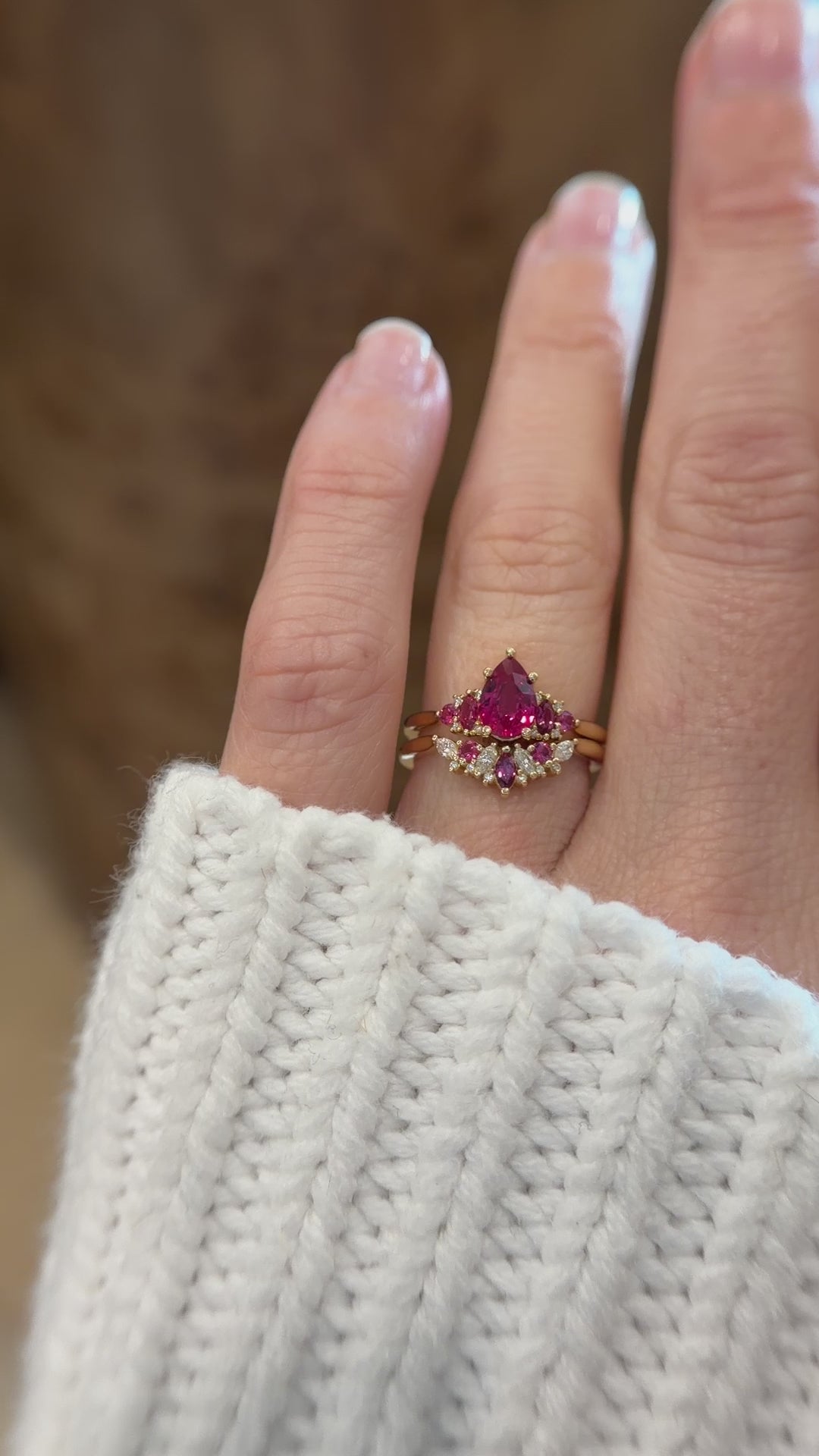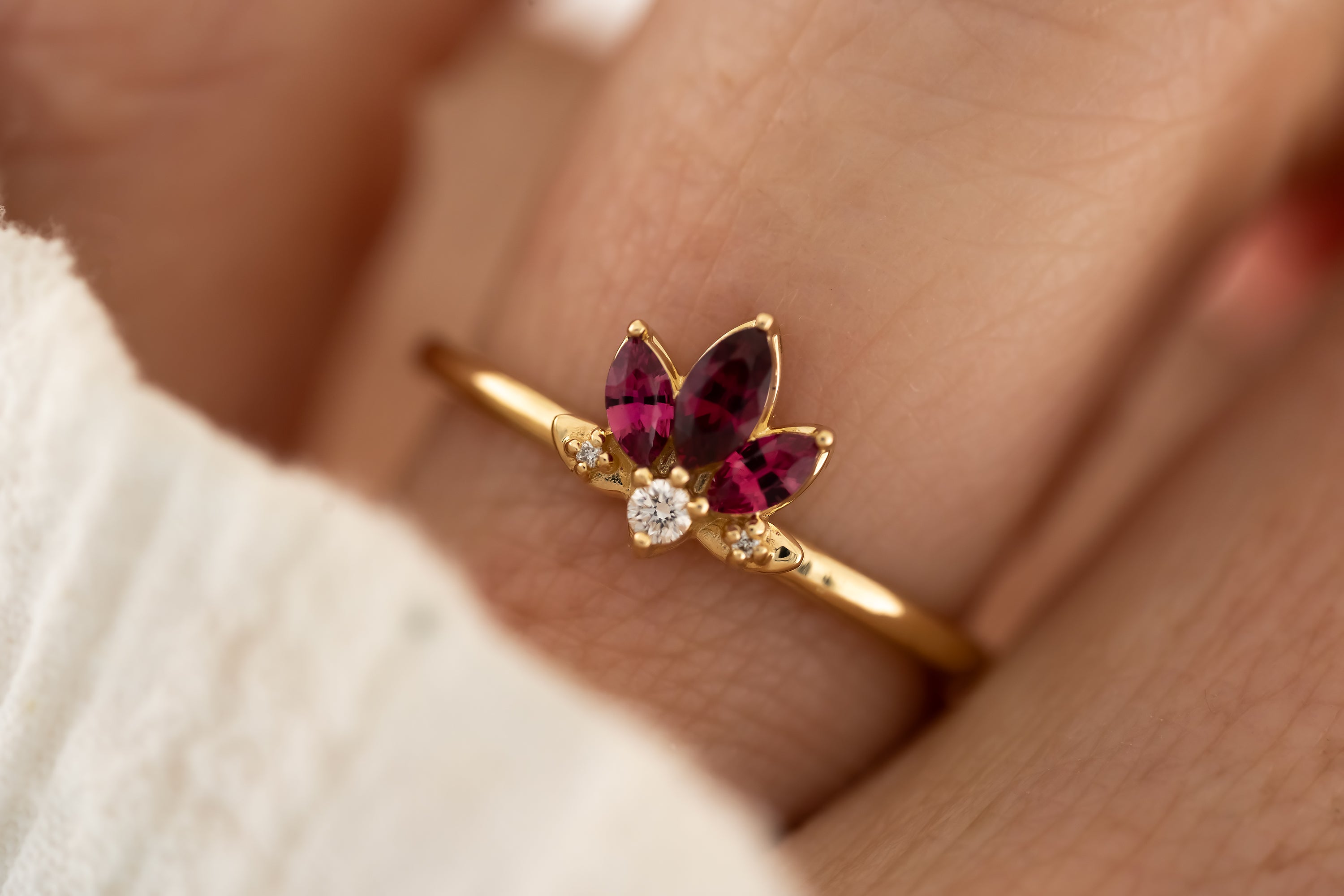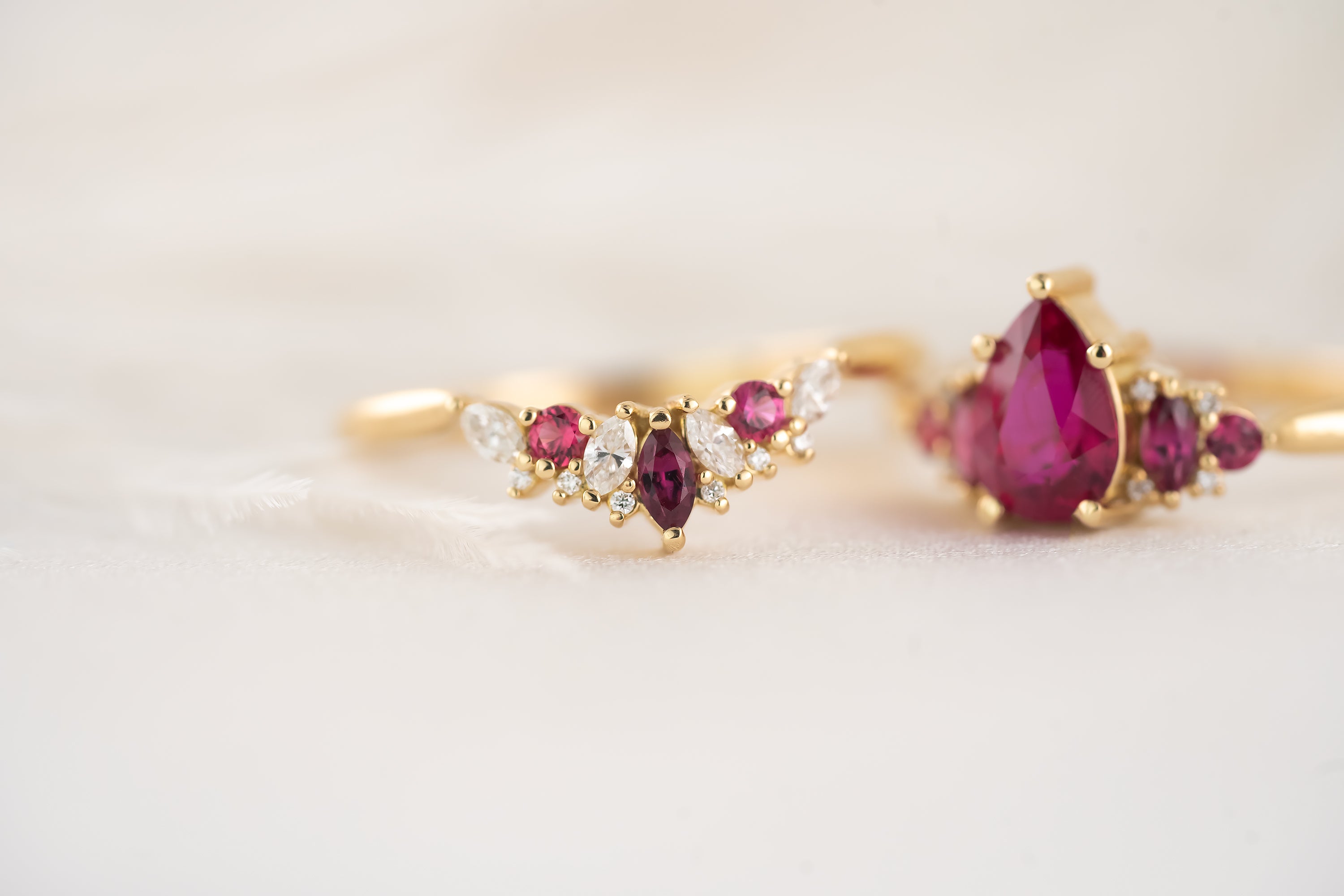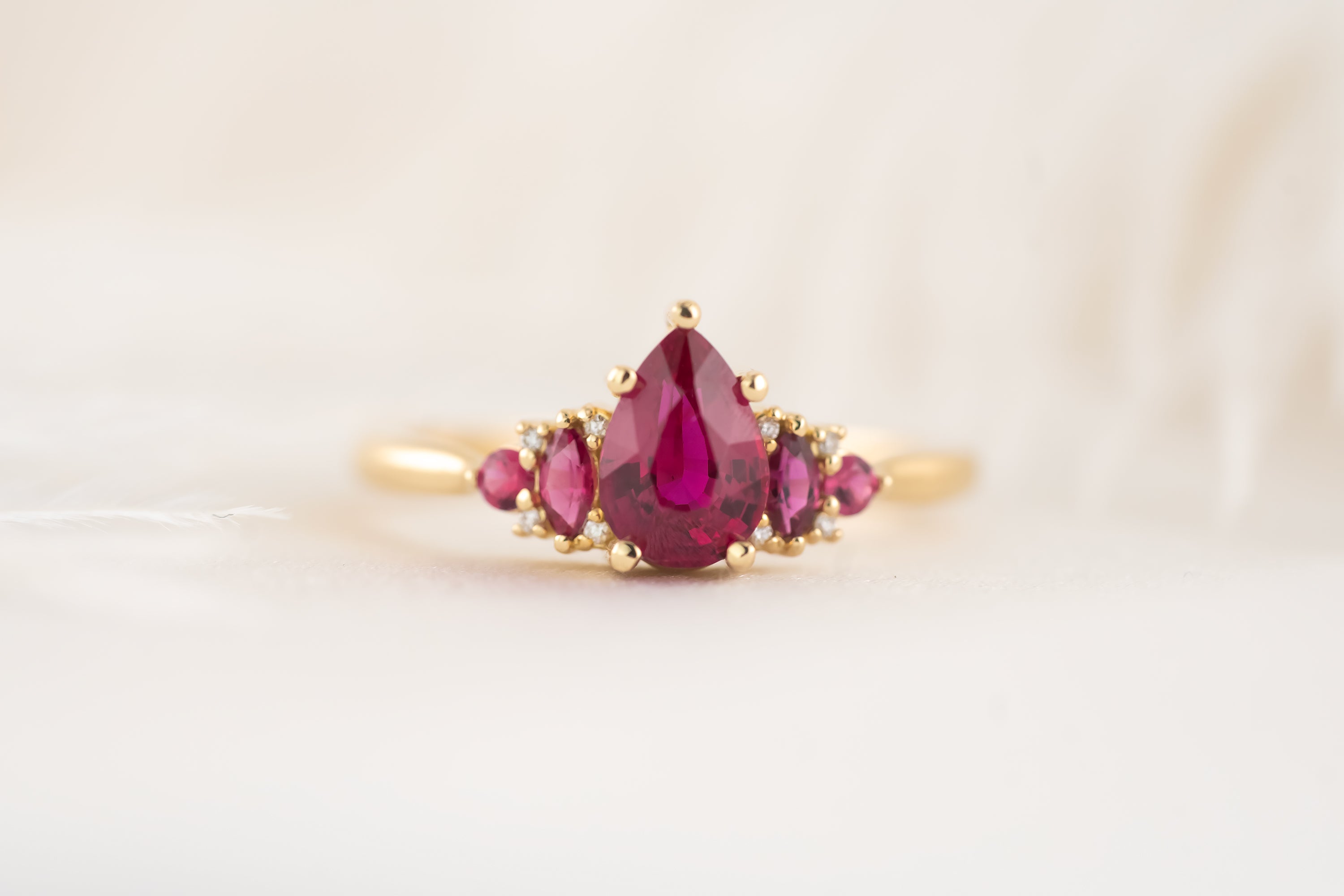












About Natural Ruby
-

Hardness
Rubies are known for their impressive hardness, making them highly durable and ideal for jewelry. As a variety of the mineral corundum, rubies rank at 9 out of 10 on the Mohs scale, placing them just below diamonds. This exceptional hardness makes rubies highly resistant to scratching, making them perfect for rings, bracelets, and other pieces that experience regular wear. Their durability, combined with a vibrant red color, has made rubies a cherished choice for fine jewelry throughout history.
- The Mohs scale is a measurement system used to assess and compare the hardness of minerals. Developed by Friedrich Mohs in 1812, it assigns a ranking from 1 to 10 to minerals based on their ability to scratch or be scratched by other minerals. This scale provides a simple and practical way to understand the relative hardness of different minerals, with 1 being the softest (e.g., talc) and 10 the hardest (e.g., diamond).
-

Color Range & Varieties
Rubies are renowned for their stunning color range, which primarily includes shades of red. This spectrum can vary from deep, intense reds to lighter, pinkish-red hues. The most coveted shade is often called "pigeon's blood," a vibrant, rich red color. Other rubies may exhibit pinkish-red, purplish-red, or orangey-red tones, depending on the specific mineral composition.
-

Origin, Stability, & Treatments
Rubies are sourced from various regions around the world, each location imparting unique characteristics to the stones. Some of the most famous ruby sources are Myanmar (Burma), Thailand, Sri Lanka, Mozambique, and Madagascar. Burmese rubies, especially those from the Mogok Valley, are known for their intense "pigeon's blood" red color, while rubies from Mozambique and Madagascar often display slightly different hues, ranging from deep red to purplish or pinkish reds.
Rubies are generally stable and durable, making them suitable for everyday wear. However, many rubies undergo treatments to enhance their color and clarity, improving their overall appearance. The most common treatment is heat treatment, a practice that’s widely accepted in the gem industry. Heat treatment intensifies the ruby's color and minimizes visible inclusions, and when performed professionally, it’s stable and permanent. Treated rubies should be disclosed as such, as untreated rubies, especially those with high-quality color, are rarer and therefore more valuable.
Another treatment is lead glass filling, where fractures are filled with lead glass to improve clarity and transparency. This treatment is less stable and can be affected by chemicals and high heat. Glass-filled rubies are more affordable but require special care, as the filling may alter over time.
Natural rubies with no treatment are highly valued, particularly if they possess rich color and minimal inclusions, as they are rare in the gem market.
We disclose all treatments on our stones. Our rubies are either heated or unheated, which is disclosed when purchasing. All other treatments, such as glass filling, is not as common, and we do not deal in those treated stones.


















